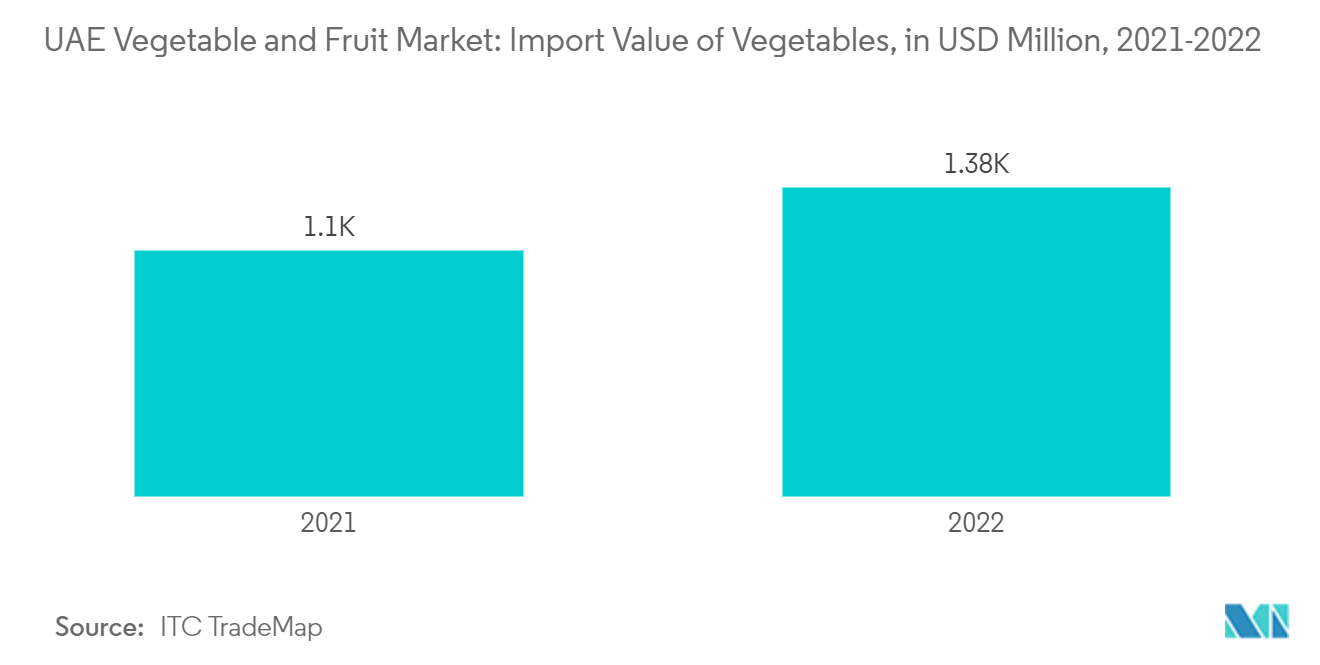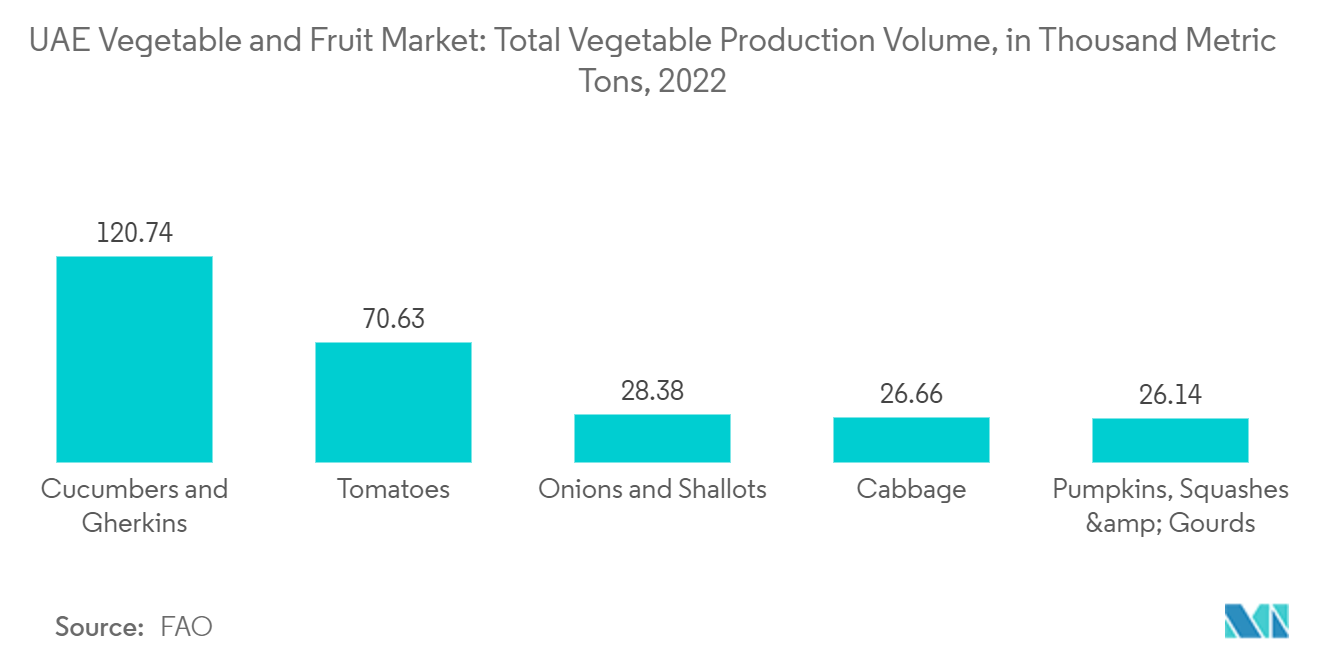Market Trends of UAE Fruits And Vegetables Industry
Rising Imports is Expected to Escalate the Consumption of Vegetables and Fruits
The UAE has been experiencing significant population growth in recent years, driven by factors such as immigration and a high birth rate. This growth has led to increased demand for food, particularly fruits and vegetables, as they are essential components of a balanced diet. For instance, according to the World Economic Outlook database, the population of the UAE increased from 9.3 million in 2018 to 9.8 million in 2022.
With a rise in disposable income, consumers in the UAE are increasingly prioritizing health and wellness, leading to a greater demand for fresh, organic, and locally sourced fruits and vegetables. The presence of a diverse population in the UAE consisting of expatriates from various countries has contributed to a wide range of culinary preferences, which has fueled the demand for various fruits and vegetables to cater to different cultural and dietary needs. This diversity has made the UAE market an attractive destination for fruit and vegetable exporters across the world.
According to the ITC Trademap, the United Arab Emirates is quite a significant importer of fresh vegetables and fruits, with annual imports valued at approximately USD 2 billion in 2022. In terms of volume, the United Arab Emirates now imports well over 3 million metric tons of fresh vegetables and fruits annually. Iran is the most important supplier of fresh vegetables and fruits to the United Arab Emirates. In 2022, nearly a million tons were imported. With 270,000 metric tons, watermelons were the most significant product imported from Iran, followed by tomatoes, apples, cabbage, onions, cauliflower, and melons. India was the second largest, with 430,000 metric tons. The United Arab Emirates imports mainly onions from India. South Africa, with 340,000 metric tons, was the third-largest supplier. This has positively impacted the market and made it more competitive, with local growers and exporters competing with global suppliers.
Moreover, as disposable income increases across the population, consumers are more willing to spend on quality food products. This economic prosperity has a direct correlation with the demand for premium and fresh fruits and vegetables, as individuals seek higher quality in their dietary choices. These developments have contributed to the growth of the fruit and vegetable market in the UAE.

Increasing Production of Vegetables
Tomatoes are commonly cultivated in various regions of the UAE, such as Ras Al Khaimah, Fujairah, Al Ain, and some oases like the Liwa Oasis. However, advancements in hydroponic technology in vertical farms and greenhouses have expanded tomato cultivation beyond areas with underground water accessibility. The Red Plum Vine varieties are increasingly popular in Emirati households for year-round cooking. However, in the last four years, the demand for substitutes such as Beef and Roma tomatoes has increased. Beef variety is highly cultivated in the greenhouses in the UAE, which makes them a prevalent variety available for consumption throughout at competitive prices. The rise in the adoption of soilless production systems, commonly associated with greenhouses, helps to enhance water and land productivity for cucumber cultivation. In 2019, ICARDA's research in the UAE revealed that the adoption of soilless production systems at farmers' fields led to an increase in cucumber yield two times more than conventional soil-based methods under greenhouses.
Government efforts to raise awareness about vegetable production are actively contributing to the increased cultivation of cucumbers in the country. The International Center for Biosaline Agriculture (ICBA), in collaboration with local partners, has played a significant role in promoting sustainable agriculture in the UAE. As a result, ICBA successfully produced 1.6 metric tons of cucumbers in 2020, driving agricultural production and sustainability. Therefore, the rising supportive government policies and the adoption of advanced agricultural technologies are estimated to drive vegetable production in the UAE market during the forecast period.


